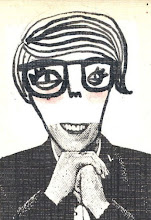
Liberty of London, opened in 1875 and founded by Arthur Lasenby Liberty, is an iconic shopping destination in London, selling carpets, furniture, and most importantly to me, fabrics. The brand, having been a household name for over one hundred years, displays new and old fabrics, with new reproductions of the original Liberty for London fabrics been made available. The Liberty for London fabrics have a very distinct look, I especially like the floral fabrics designed in the sixties; they are very reminiscent of a past period of time and, like Mary Blair’s work, provoke a sense of nostalgia. The fabrics look vintage but vintage in a modern way; it would be hard to distinguish whether some of them had been designed in 1969 or 2009.
This year, Liberty of London embarked on a collaboration with a major American retailer, Target, to create ‘Liberty of London for Target’. This entails floral teapots, floral piggy banks, floral soft furnishings and most impressively, floral bicycles!
The floral bicycles caught my eye, not only because I want to own one, but because I saw a direct link with my current work – making floral fabric aircrafts. Like me, Liberty of London for Target is circumventing the gender of something typically ‘male’; making a mundane and ‘boyish’ object into something beautiful and decorative.
Image from: www.liberty.co.uk




